SilverStone SX550 SFX PSU Review
SilverStone continues to enrich its SFX PSU portfolio. One of the most recent additions is the SX550, a budget-oriented unit featuring Gold-class efficiency and fixed cables instead of modular ones. As you can tell, it's intended to bring prices down.
Why you can trust Tom's Hardware
Ripple Measurements
To learn how we measure ripple, please click here.
The following table includes the ripple levels we measured on the SX550's rails. The limits, according to the ATX specification, are 120 mV (+12V) and 50 mV (5V, 3.3V and 5VSB).
| Test | 12V | 5V | 3.3V | 5VSB | Pass/Fail |
|---|---|---|---|---|---|
| 10% Load | 12.1 mV | 9.7 mV | 9.1 mV | 7.6 mV | Pass |
| 20% Load | 32.5 mV | 14.0 mV | 10.3 mV | 8.9 mV | Pass |
| 30% Load | 29.0 mV | 13.8 mV | 10.0 mV | 10.1 mV | Pass |
| 40% Load | 29.3 mV | 15.7 mV | 10.7 mV | 10.9 mV | Pass |
| 50% Load | 31.8 mV | 18.0 mV | 12.0 mV | 11.8 mV | Pass |
| 60% Load | 35.0 mV | 18.2 mV | 11.6 mV | 12.6 mV | Pass |
| 70% Load | 36.4 mV | 20.4 mV | 11.7 mV | 13.5 mV | Pass |
| 80% Load | 37.7 mV | 22.0 mV | 13.0 mV | 14.2 mV | Pass |
| 90% Load | 44.0 mV | 24.3 mV | 13.7 mV | 15.5 mV | Pass |
| 100% Load | 58.9 mV | 25.8 mV | 15.1 mV | 16.7 mV | Pass |
| 110% Load | 95.8 mV | 29.3 mV | 17.1 mV | 18.8 mV | Pass |
| Cross-Load 1 | 36.4 mV | 17.6 mV | 13.5 mV | 13.5 mV | Pass |
| Cross-Load 2 | 57.8 mV | 25.7 mV | 15.7 mV | 20.5 mV | Pass |

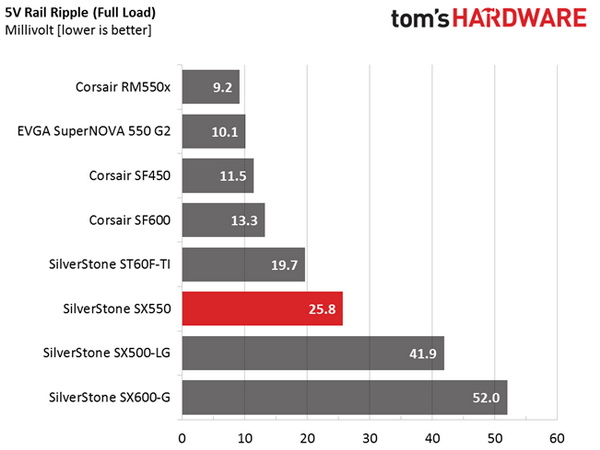
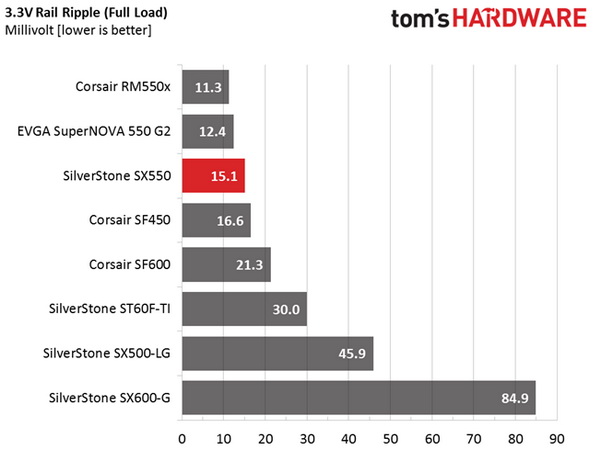

Ripple suppression is much better than SilverStone's SX600-G, made by Enhance Electronics. Compared to the Corsair SF units, which are manufactured by Great Wall, the SX550 trails when it comes to the +12V rail's ripple performance. On top of that, as you can see in the table above, with 110 percent load the ripple performance of the +12V rail deteriorates significantly. It looks like 550 W is close to this platform's limit.
Ripple Oscilloscope Screenshots
The following oscilloscope screenshots illustrate the AC ripple and noise registered on the main rails (+12V, 5V, 3.3V and 5VSB). The bigger the fluctuations on the screen, the bigger the ripple/noise. We set 0.01V/Div (each vertical division/box equals 0.01V) as the standard for all measurements.
Ripple At Full Load
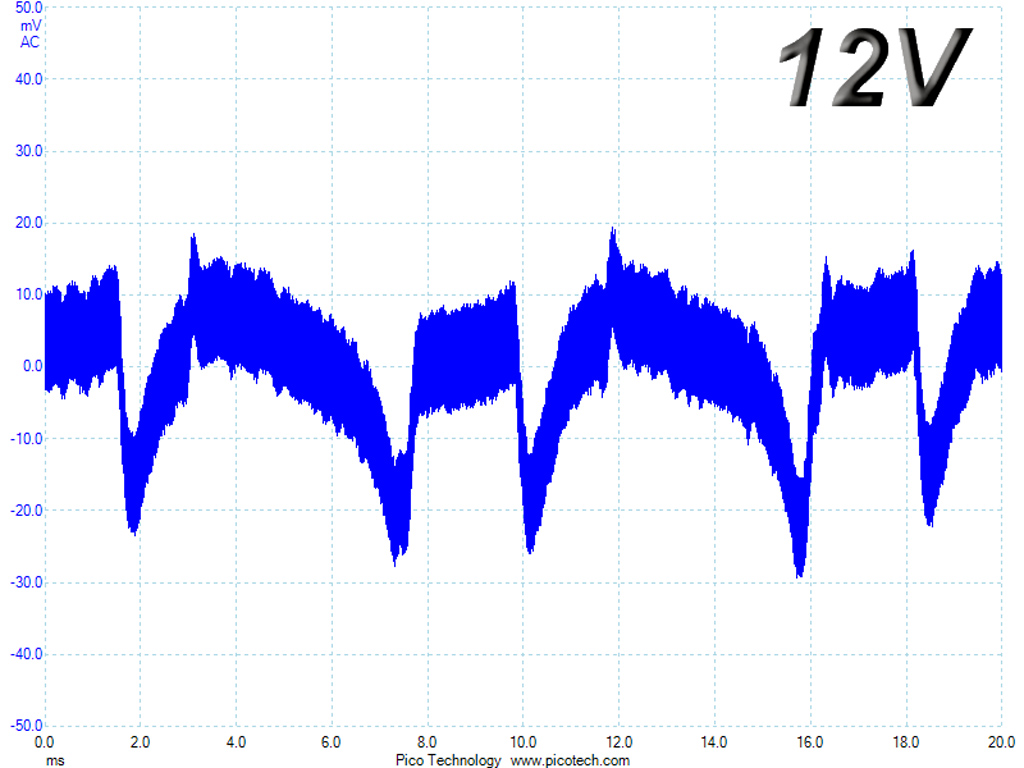
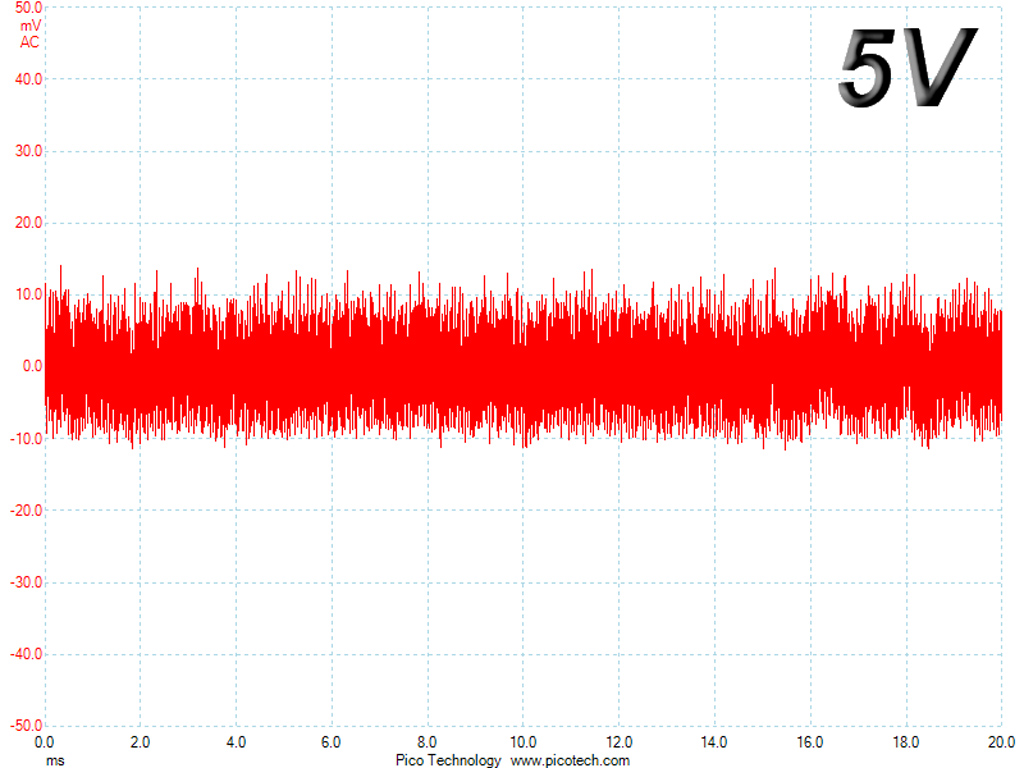
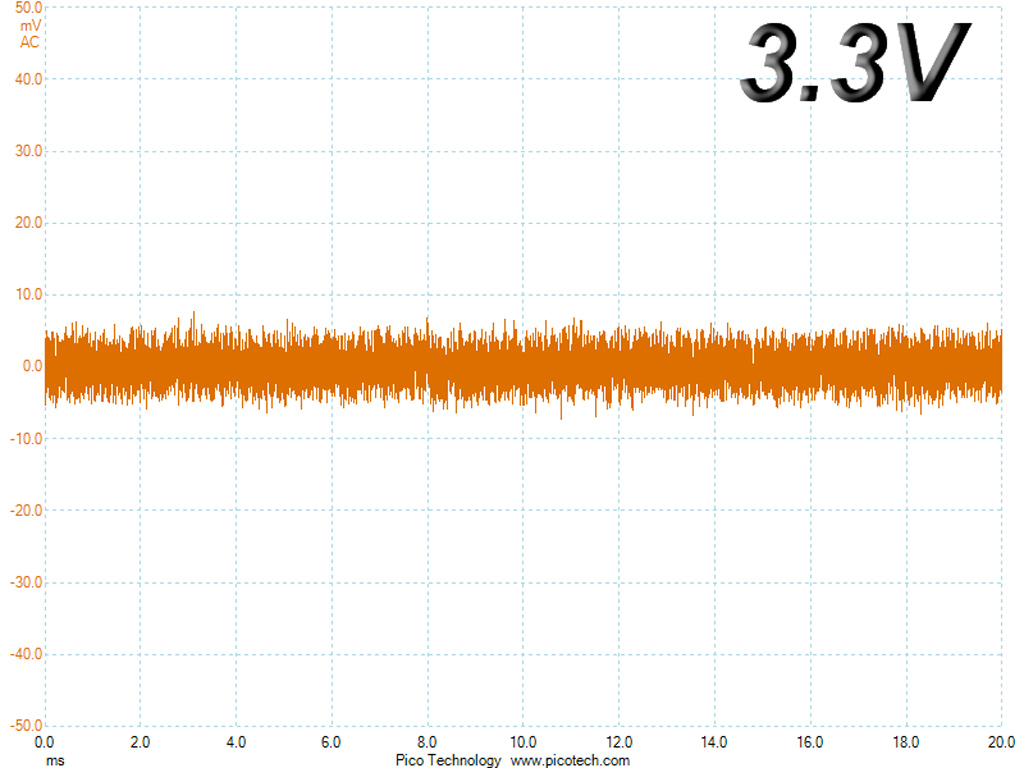
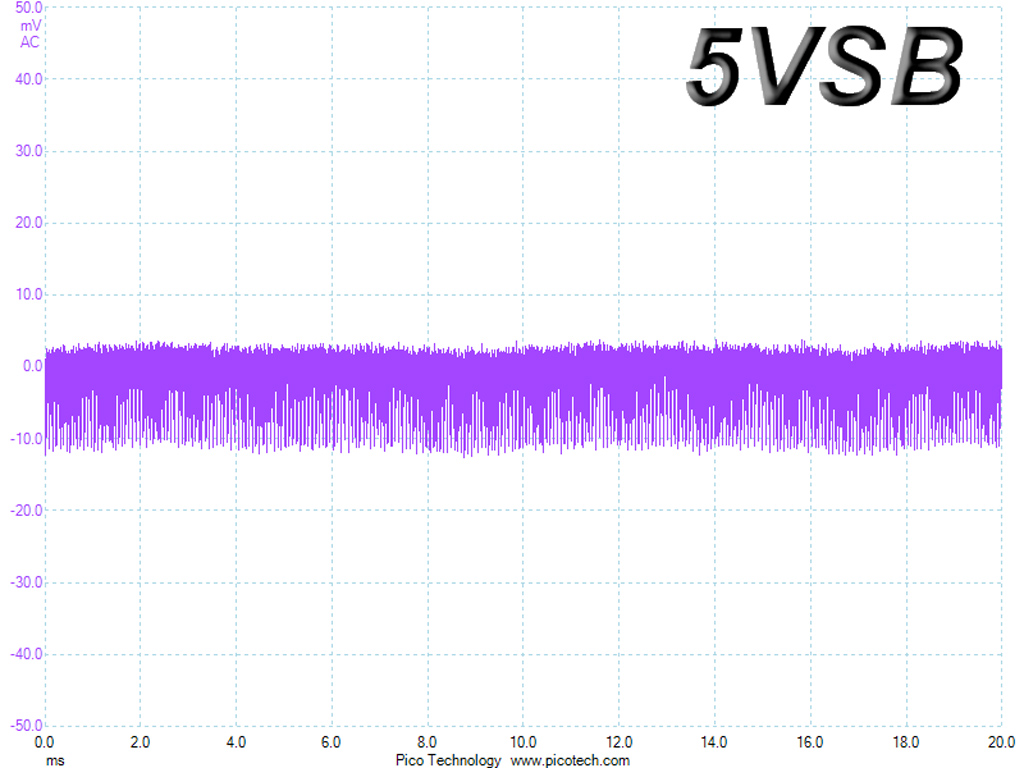
Ripple At 110-Percent Load

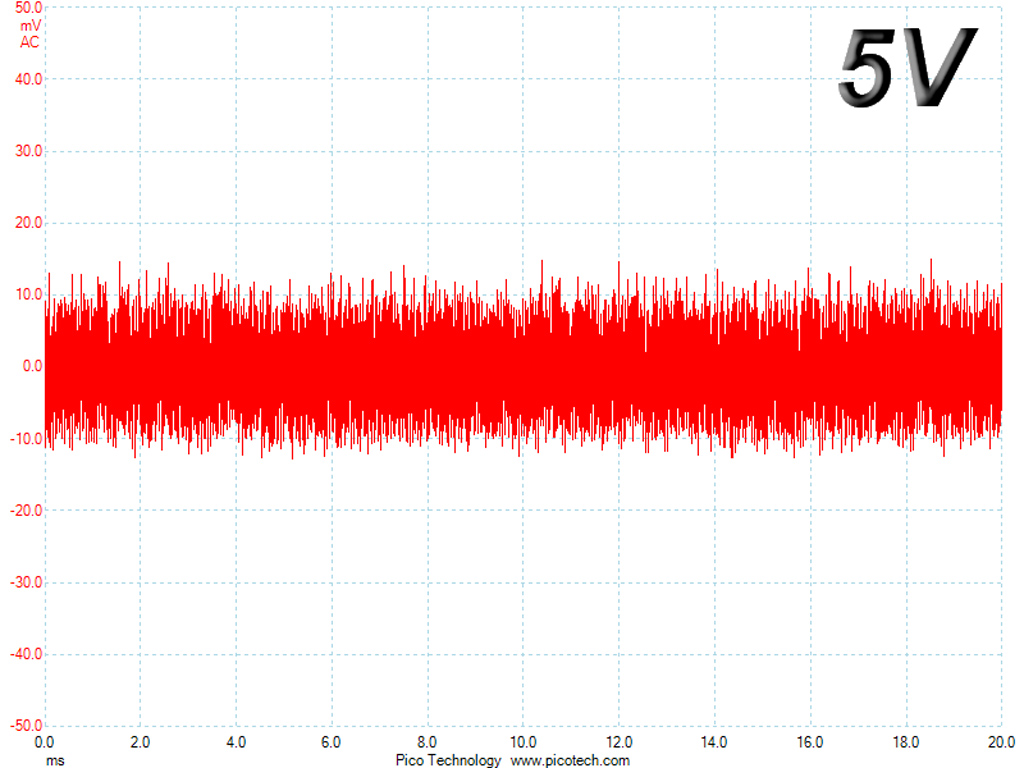
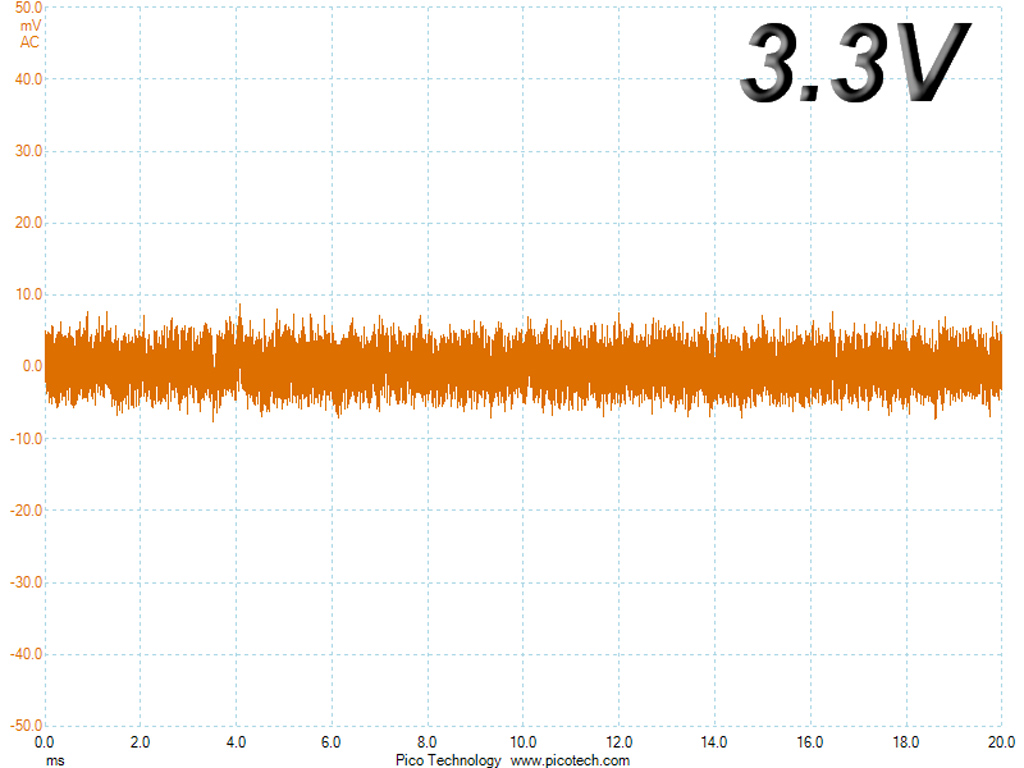
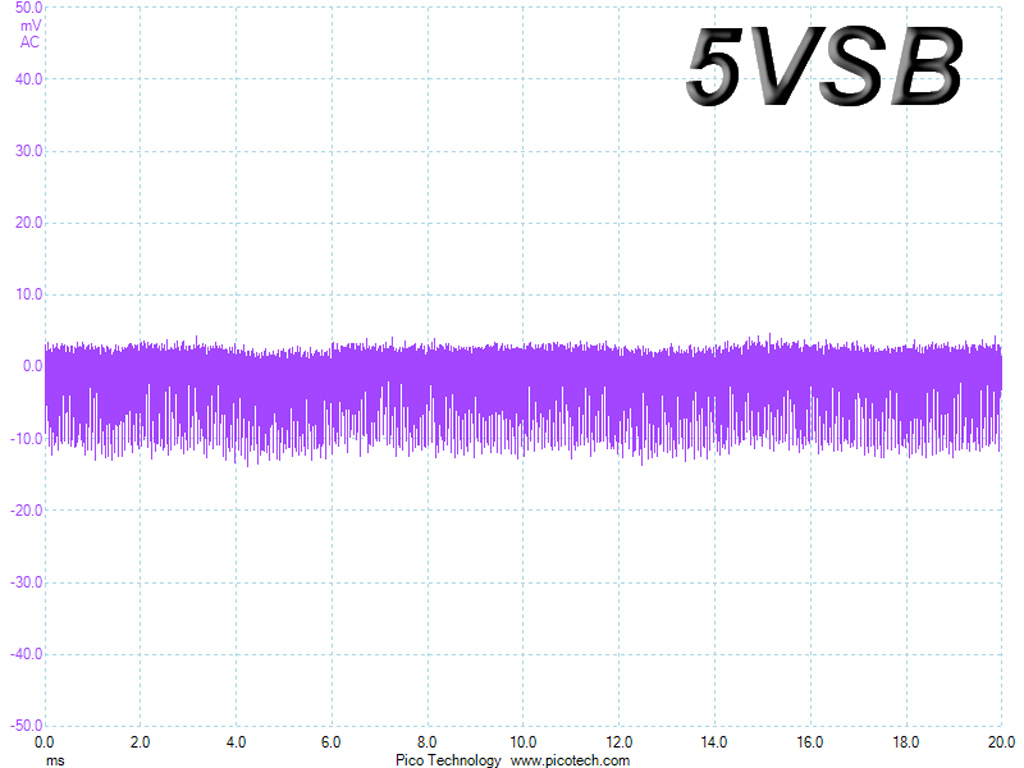
Ripple At Cross-Load 1
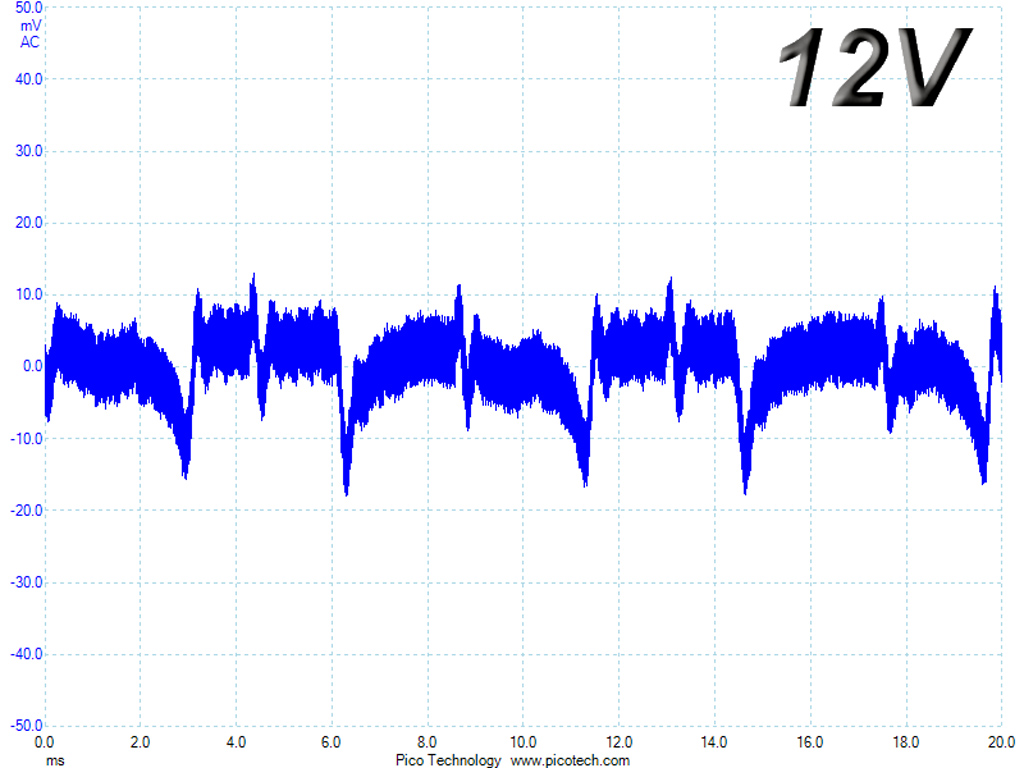
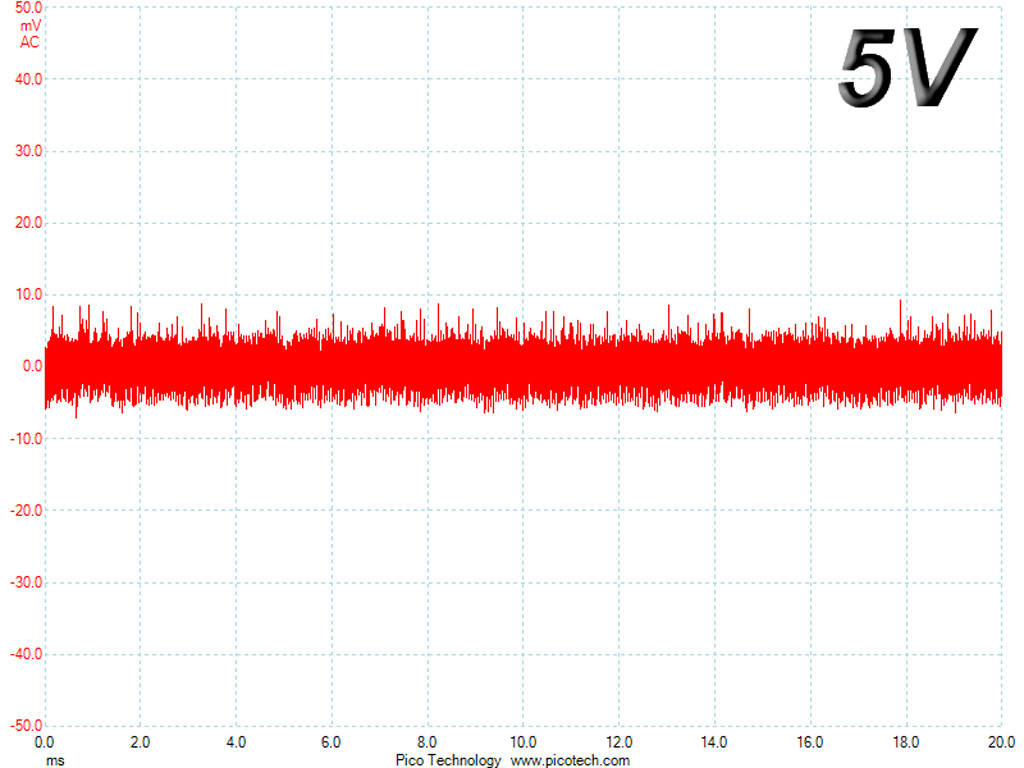
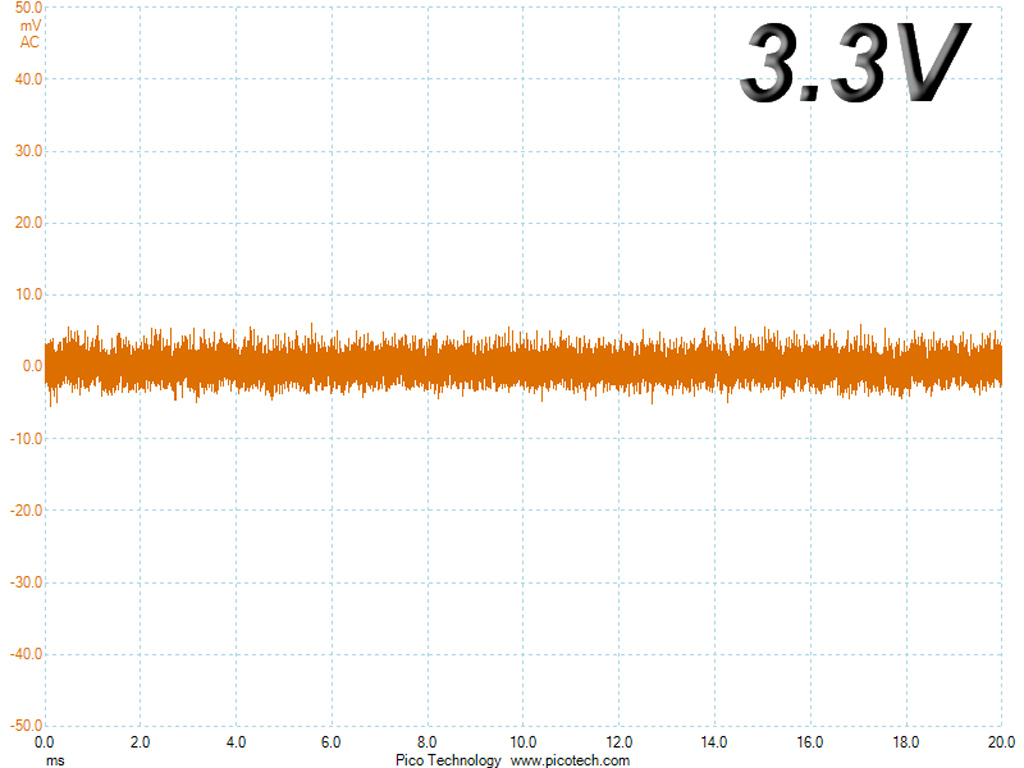
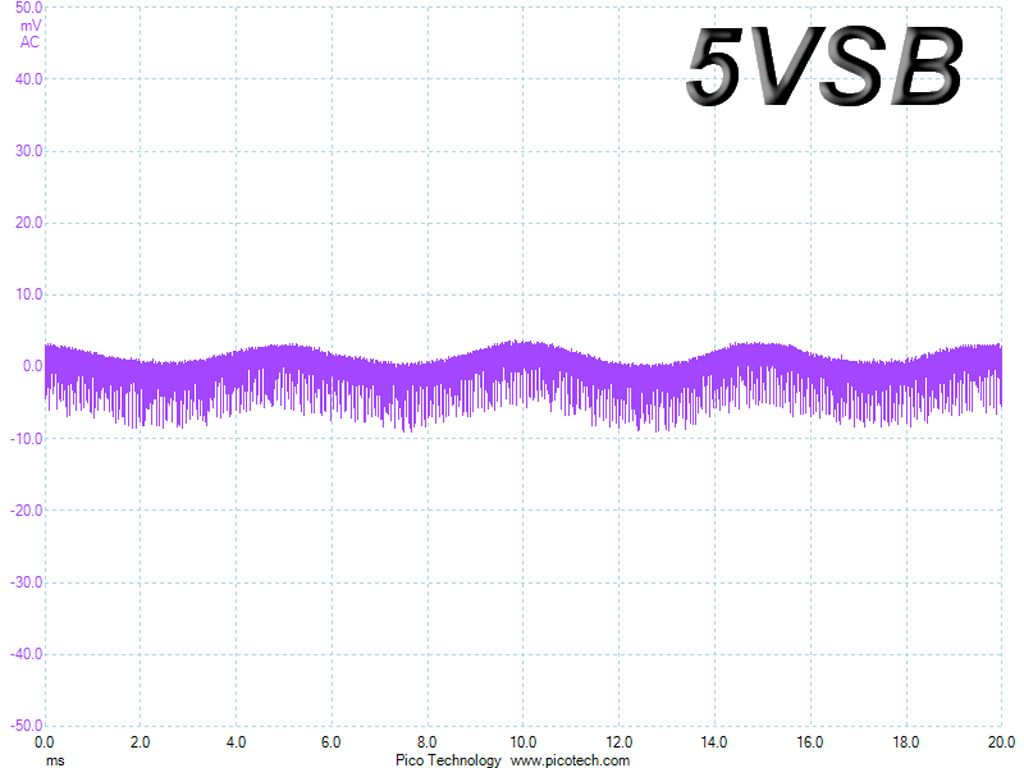
Ripple At Cross-Load 2
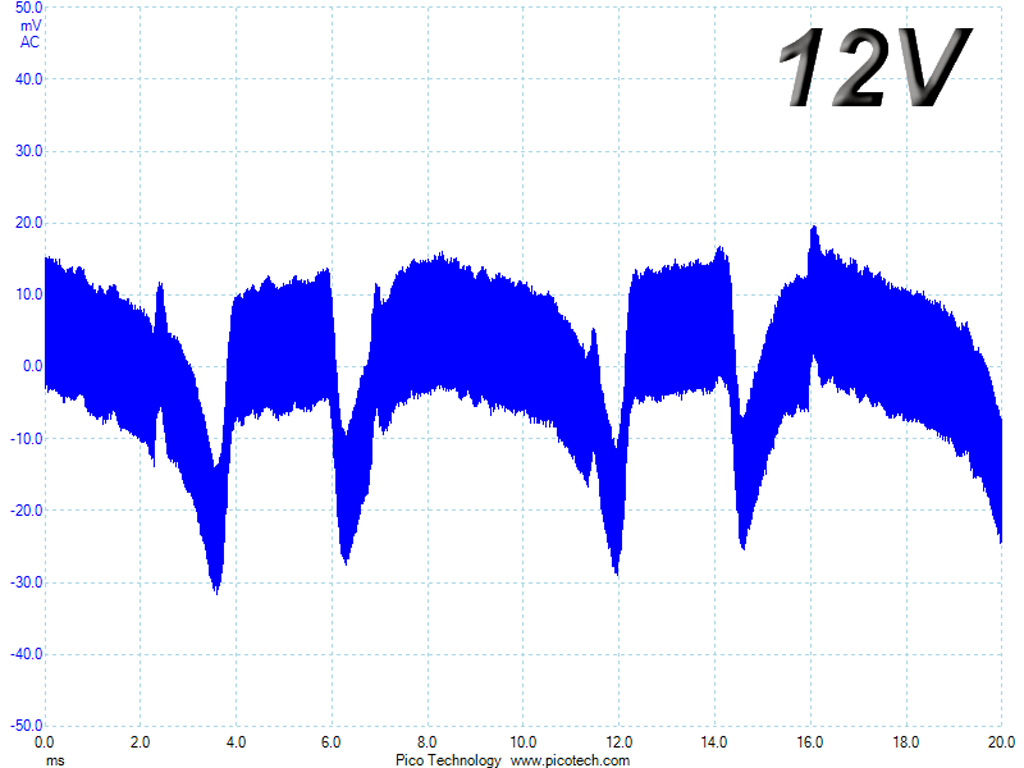
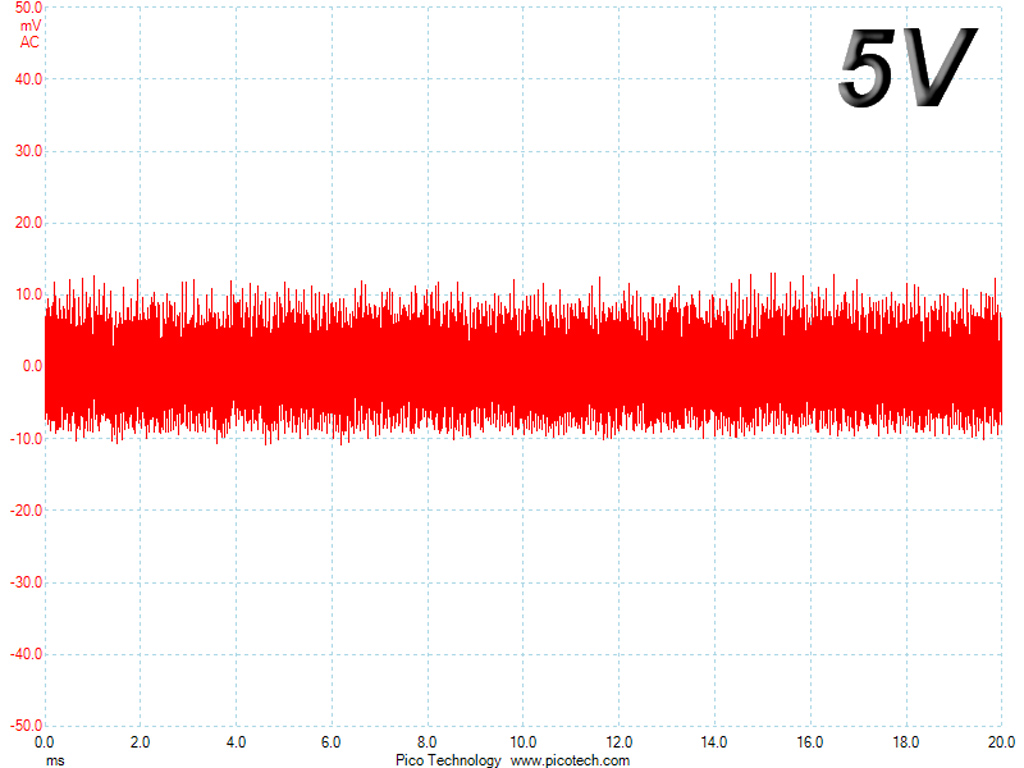
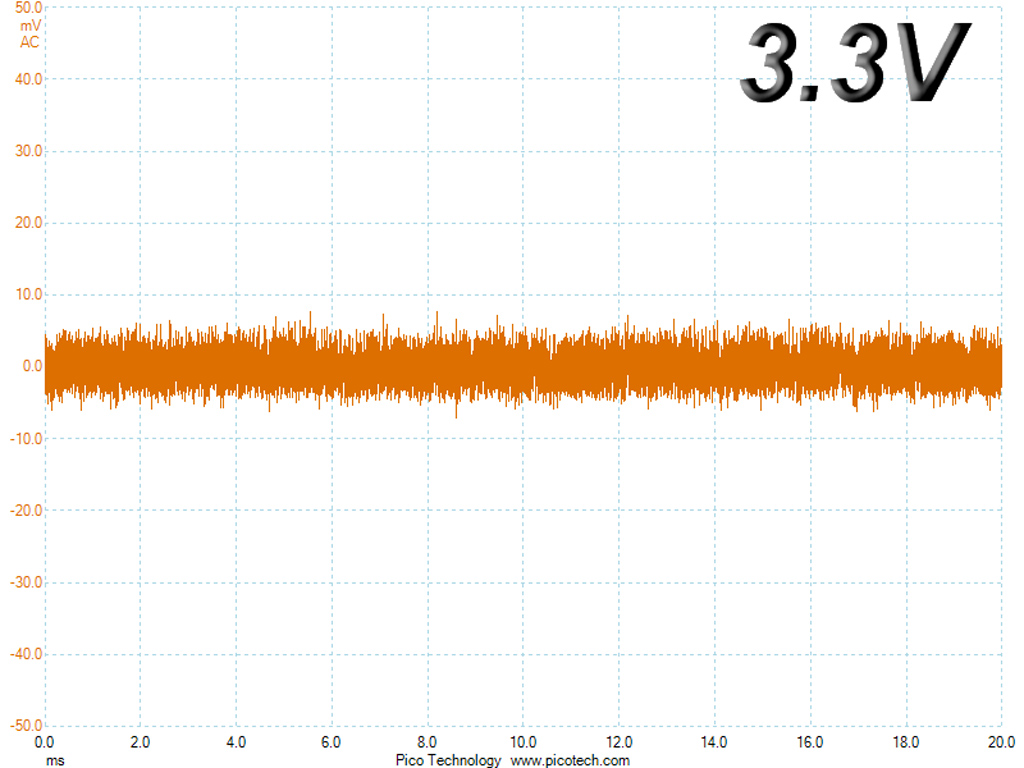
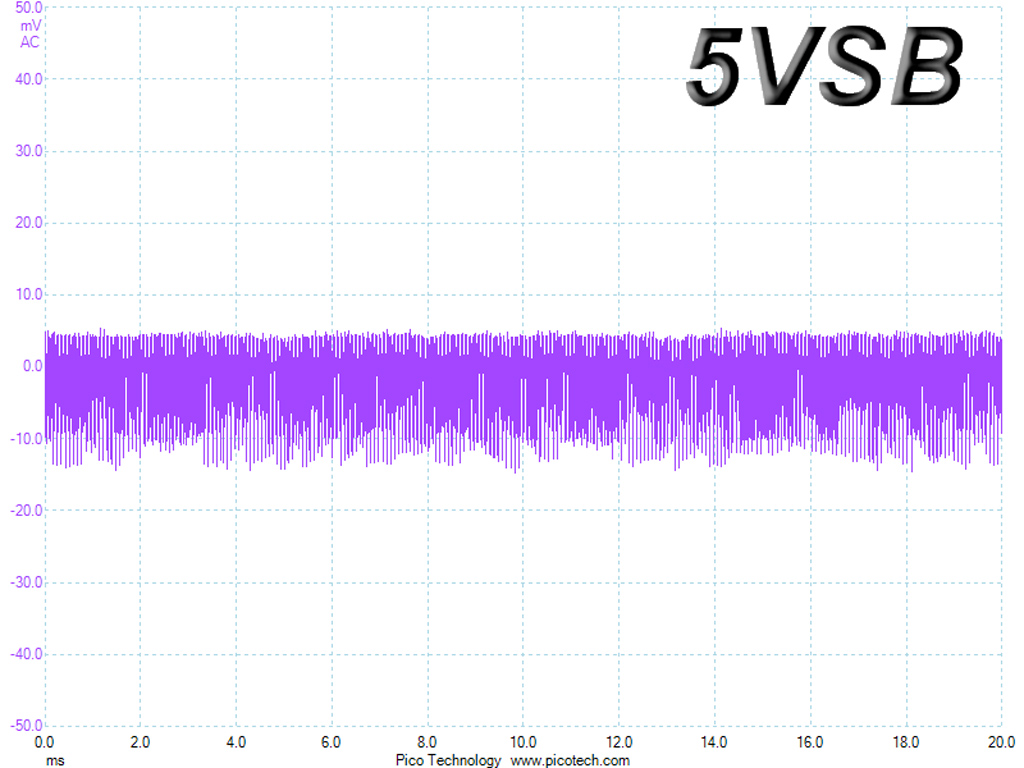
Get Tom's Hardware's best news and in-depth reviews, straight to your inbox.
Current page: Ripple Measurements
Prev Page Transient Response Tests Next Page Performance, Performance Per Dollar, Noise And Efficiency Ratings
Aris Mpitziopoulos is a contributing editor at Tom's Hardware, covering PSUs.
-
turkey3_scratch It doesn't seem like Silverstone can get anything right these days. I don't see how they can't include a rubber grommet where the wires leave the cage. When people are bending those wires around the case, they can easily rub up against a sharp edge like that and cut through the insulation or even damage the wires and increase the resistance. For $95 this is a rip off, I think it should be priced at $75. It's pretty loud, too.Reply
Also, according to your thing the PS113 doesn't support OTP, even though this unit seems to. It also seems to support UVP. Doesn't quite make sense to me. http://www.tomshardware.com/reviews/power-supplies-101,4193-22.html -
Aris_Mp Most supervisor ICs don't support OTP, so this protection is implemented through other circuits in PSUs that actually have OTP.Reply -
Clamyboy74 Having few cables is the point of an sfx psu. Sfx cases don't have much driver space, and short wires are good for small cases. Who in their right mind would but an sfx psu for use in a mod tower case, especially with a $95 price tag? When you review sfx psu's please bear into consideration that these are made for use in small cases, where short cables, few connectors are deal breakers for consumers. Thank you.Reply -
turkey3_scratch The thing that hurts this unit is that there is no common hardware configuration that will fit into an SFX case and require more than a 400W power supply like the Corsair SF which is much better. Most high-end AMD GPUs like the R9 390 are just way too large to even fit into an SFX case. If you think of cards that can actually fit into an SFX case, they are going to be small form factor cards, which are almost always under 200W, or these days even quite less. CPU overclocking to extremes can't be done in SFX cases with limited cooler sizes and due to airflow restrictions, so, really, I don't see a position in the market where this unit can be competitive over the Corsair SF400. And since this unit does not come with an SFX to ATX bracket, it is implied that nobody will probably install it into a case that takes an ATX PS2 power supply.Reply -
AlistairAB I have the corsaif sf450 and can confirm it blows the silverstone out of the water (silverstone never fixed their fan problems with their sfx psus)Reply -
Samer1970 Reply18459920 said:The thing that hurts this unit is that there is no common hardware configuration that will fit into an SFX case and require more than a 400W power supply like the Corsair SF which is much better. Most high-end AMD GPUs like the R9 390 are just way too large to even fit into an SFX case. If you think of cards that can actually fit into an SFX case, they are going to be small form factor cards, which are almost always under 200W, or these days even quite less. CPU overclocking to extremes can't be done in SFX cases with limited cooler sizes and due to airflow restrictions, so, really, I don't see a position in the market where this unit can be competitive over the Corsair SF400. And since this unit does not come with an SFX to ATX bracket, it is implied that nobody will probably install it into a case that takes an ATX PS2 power supply.
how about Titan X Pascal cards / 1080 ti? They consume 435Watt total System power.
-
turkey3_scratch Not quite samer and not cards that would fit in an SFX case.Reply
Also, my bad guys, I meant SF450 not 400. -
Samer1970 Reply18460559 said:Not quite samer and not cards that would fit in an SFX case.
Also, my bad guys, I meant SF450 not 400.
maybe you should check the following cases :
http://www.fractal-design.com/home/product/cases/node-series/node-202
http://www.silverstonetek.com/product.php?pid=533
http://www.silverstonetek.com/raven/products/index.php?model=RVZ02
https://www.ncases.com/
https://www.dan-cases.com/ -
turkey3_scratch If you own a 1080Ti why would you get a mediocre PSU like this anyway? Once again, it doesn't seem to have a purpose at all. Once power requirements get anywhere past 300W you probably have high-end hardware in which case a unit like this is a poor choice over the SF600.Reply
Budget power supplies over 500W really have no place in this world. People purchase budget power supplies over 500W for three reasons:
1) They have high end hardware and underestimate the need for a quality PSU
2) They are uninformed and think "more watts" is better.
3) They overestimate their power requirements.
I suppose you could argue if they have 225W of hardware a 550W unit like this is perfect in terms of efficiency. Okay, maybe so. But that depends on how much you value efficiency, I suppose.
The unit still performs poorly compared to Corsair. It's true, Corsair SF dominate the SFX market with the best units. -
Samer1970 Reply18460649 said:If you own a 1080Ti why would you get a mediocre PSU like this anyway? Once again, it doesn't seem to have a purpose at all. Once power requirements get anywhere past 300W you probably have high-end hardware in which case a unit like this is a poor choice over the SF600.
Budget power supplies over 500W really have no place in this world. People purchase budget power supplies over 500W for three reasons:
1) They have high end hardware and underestimate the need for a quality PSU
2) They are uninformed and think "more watts" is better.
3) They overestimate their power requirements.
I suppose you could argue if they have 225W of hardware a 550W unit like this is perfect in terms of efficiency. Okay, maybe so. But that depends on how much you value efficiency, I suppose.
The unit still performs poorly compared to Corsair. It's true, Corsair SF dominate the SFX market with the best units.
Does not need to be 1080 ti , any 250 watt GPU card ... from 390 , 390x to others .. there are people on budget and use such cards in compact systems .
I just mentioned gtx 1080 ti as a modern example ..